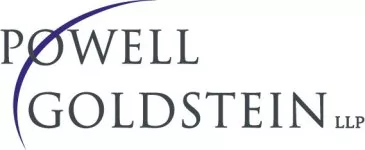Section 546 of the Bankruptcy Code expressly provides certain limitations on the avoiding powers of a trustee in a bankruptcy case. In particular, section 546(e) prohibits a trustee from avoiding a transfer that is a settlement payment made to a financial institution, except for transfers that are made with actual intent to defraud the debtor. Essentially, 546(e) is a "safe harbor" provision for transactions that would otherwise be regulated by securities laws—which generally strive to limit transactions that disrupt the market of buying and selling securities.
Two decisions originating from bankruptcy courts in the Second and Third Circuits appear to illustrate a lack of consistency among the courts about how this section of the Bankruptcy Code should be interpreted and suggest that shareholders who may have sold or may be considering selling their shares in a company to a purchaser under a leveraged buyout ("LBO") should be aware of possible liability for alleged fraudulent transfers in the future.
A Narrow Interpretation of Section 546(e)
The Bankruptcy Court for the Eastern District of New York issued a decision that should concern shareholders selling their shares of a company in a LBO. In In re Norstan Apparel Shops, Inc., 367 B.R. 68 (Bankr. E.D.N.Y. 2007), shareholders who sold their shares of a company in an LBO were sued by the unsecured creditors committee, which sought to avoid the payments made in connection with the LBO. The former shareholders moved to dismiss the lawsuit for, among other things, failure to state a claim. The bankruptcy court denied the motion to dismiss the action, finding that the payments received by the shareholders in the LBO were not "settlement payments" under Section 546(e) of the Bankruptcy Code. Because the LBO involved an S corporation and not a public corporation, the bankruptcy court determined that the safe harbor of Section 546(e) was not applicable where the public securities markets were not involved. The Norstan Apparel court noted that a stretch of the definition of "settlement payment" to include any payment made in connection with securities, even if the transaction does not involve the public securities markets, would deprive the definition of its true meaning.
A Broad Interpretation of Section 546(e)
Just 21 days after the issuance of the Norstan Apparel decision, the Bankruptcy Court for the District of Delaware issued a decision that provides greater comfort to shareholders selling their shares in a LBO. In In re Plassein Int'l Corp., 366 B.R. 318 (Bankr. Del. 2007), the court exercised a broad reading of Section 546(e) of the Bankruptcy Code to determine that the transfers received by shareholders of privately held corporations for their shares in a LBO were protected from an avoidance action by the trustee in a bankruptcy case filed several years after the LBO. The Plassein court determined that the transfers to the shareholders made as a part of the LBO were in fact "settlement payments" as the term is used in Section 546(e) of the Bankruptcy Code. Citing precedent from the Third Circuit, the Plassein court noted that settlement payments include transfers of funds made to conclude a securities transaction, just like the transfers before the court.
The Plassein court continued its analysis by noting that so long as the settlement payment was made to a financial institution, the payment remained an unavoidable transfer. Because the transfers to shareholders in the matter before the court had been effected via wire transfers through a bank, the transfers were found to be unavoidable.
The broad interpretation of Section 546(e) set forth by the Plassein court continues to be good law and has been accepted in other jurisdictions. For example, in QSI Holdings, Inc. v. Alford, 382 B.R. 731 (W.D. Mich. 2007), the United States District Court for the Western District of Michigan affirmed a bankruptcy court decision interpreting Section 546(e) broadly, observing that "nothing in the plain language of the statutes limits the application of the exemption to public transactions." Id. at 741.
The Lesson to be Learned
The differing outcomes of these recent decisions illustrate a continued split in the circuits as to how broadly Section 546(e) is interpreted. Accordingly, the venue of any action seeking to avoid and recover LBO-related transfers will likely have a significant impact on the success of such actions. Shareholders considering selling their shares in an LBO transaction should be aware that a subsequent bankruptcy by the purchaser may result in an action seeking to recover the proceeds of the transfer.
The content of this article is intended to provide a general guide to the subject matter. Specialist advice should be sought about your specific circumstances.


